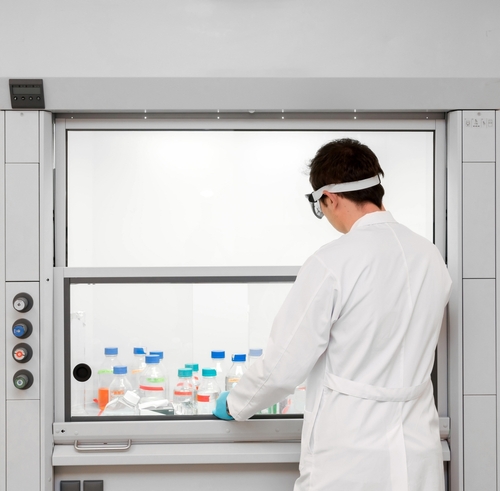
At CatLabPro, we understand the critical role fume hoods play in ensuring laboratory safety and research integrity. But even the most advanced fume hood needs proper cleaning and maintenance to function optimally. A neglected hood can become a breeding ground for harmful contaminants, jeopardizing your health and your experiments. That’s why we’ve created this comprehensive guide to proper fume hood cleaning.
Before You Begin:
- Safety First: Always refer to your institution’s specific fume hood safety protocols and Material Safety Data Sheets (MSDS) for any chemicals used in the hood. Wear appropriate personal protective equipment (PPE), including gloves, goggles, and a lab coat, throughout the cleaning process.
- Gather Your Supplies: Stock up on cleaning solutions approved for your fume hood’s materials and the chemicals used within. Opt for mild soap and water for most non-hazardous operations. Avoid harsh abrasives or chemicals that could damage the hood’s surface or react with lingering residues.
- Clear the Work Area: Remove all equipment and chemicals from the fume hood interior before cleaning. Place them in designated storage areas, ensuring proper labeling and disposal of hazardous materials.
Understanding Your Fume Hood:
Before diving into cleaning procedures, let’s explore the different types of fume hoods you might encounter:
- Conventional Fume Hood: The most common design, featuring an adjustable sash and airflow directed away from the user. Suitable for a wide range of applications.
- Bypass Fume Hood: Offers higher airflow velocities for potent chemicals but requires additional user training and safety precautions.
- Ducted Fume Hood: Connects directly to an external exhaust system for maximum containment of hazardous fumes.
- Walk-in Fume Hood: Large enough to accommodate bulky apparatus within the hood, often used for large-scale experiments.
Knowing your fume hood’s type is crucial for proper cleaning and maintenance. Consult your lab manual or manufacturer’s instructions for specific details and cleaning protocols tailored to your model.
Cleaning Procedures:
Regular Cleaning (Weekly or More Frequently):
- Test the Fume Hood: Before each cleaning session, verify proper airflow by performing the sash test outlined in your lab’s safety protocols. Ensure the sash closes smoothly and the airflow indicator (if present) shows appropriate levels.
- Wipe Down Surfaces: Starting from the top and working your way down, clean all interior surfaces with your chosen cleaning solution. Pay close attention to the sash, work surface, baffles, and light fixture. Use non-abrasive cloths or sponges to avoid scratching.
- Don’t Forget the Exterior: Clean the exterior surfaces of the fume hood, including the sash and control panel, following the same guidelines as the interior.
- Dispose of Waste Properly: Carefully dispose of used cleaning cloths, wipes, and any contaminated materials according to your lab’s hazardous waste protocols.
Deep Cleaning (Monthly or As Needed):
- Repeat Regular Cleaning Steps: Perform the regular cleaning procedures outlined above.
- Focus on Baffles and Filters: Pay extra attention to the baffles and filters, which trap airborne contaminants. Consult your fume hood manual or manufacturer’s recommendations for specific cleaning instructions. Some baffles may be removable for thorough cleaning, while others require specialized techniques.
- Decontamination (if applicable): If you’ve worked with particularly hazardous chemicals, your lab protocols may require additional decontamination steps. Always follow the specific guidelines for the chemicals involved.
Additional Tips:
- Spill Response: Act promptly and according to your lab’s spill response plan in case of chemical spills within the fume hood. Remember, the fume hood is designed to contain airborne contaminants, not spills.
- Routine Maintenance: Schedule regular inspections and maintenance of your fume hood by qualified personnel, adhering to manufacturer’s recommendations and local regulations.
- Training: Ensure all lab personnel using the fume hood receive proper training on its safe operation, cleaning, and maintenance procedures.
CatLabPro: Your Partner in Safe and Efficient Labs
At CatLabPro, we’re committed to providing high-quality fume hoods and other laboratory furniture solutions. We believe in empowering researchers with the knowledge and resources they need to work safely and productively. If you have any questions about your specific fume hood cleaning needs or are considering upgrading your lab furniture, please don’t hesitate to contact us.


